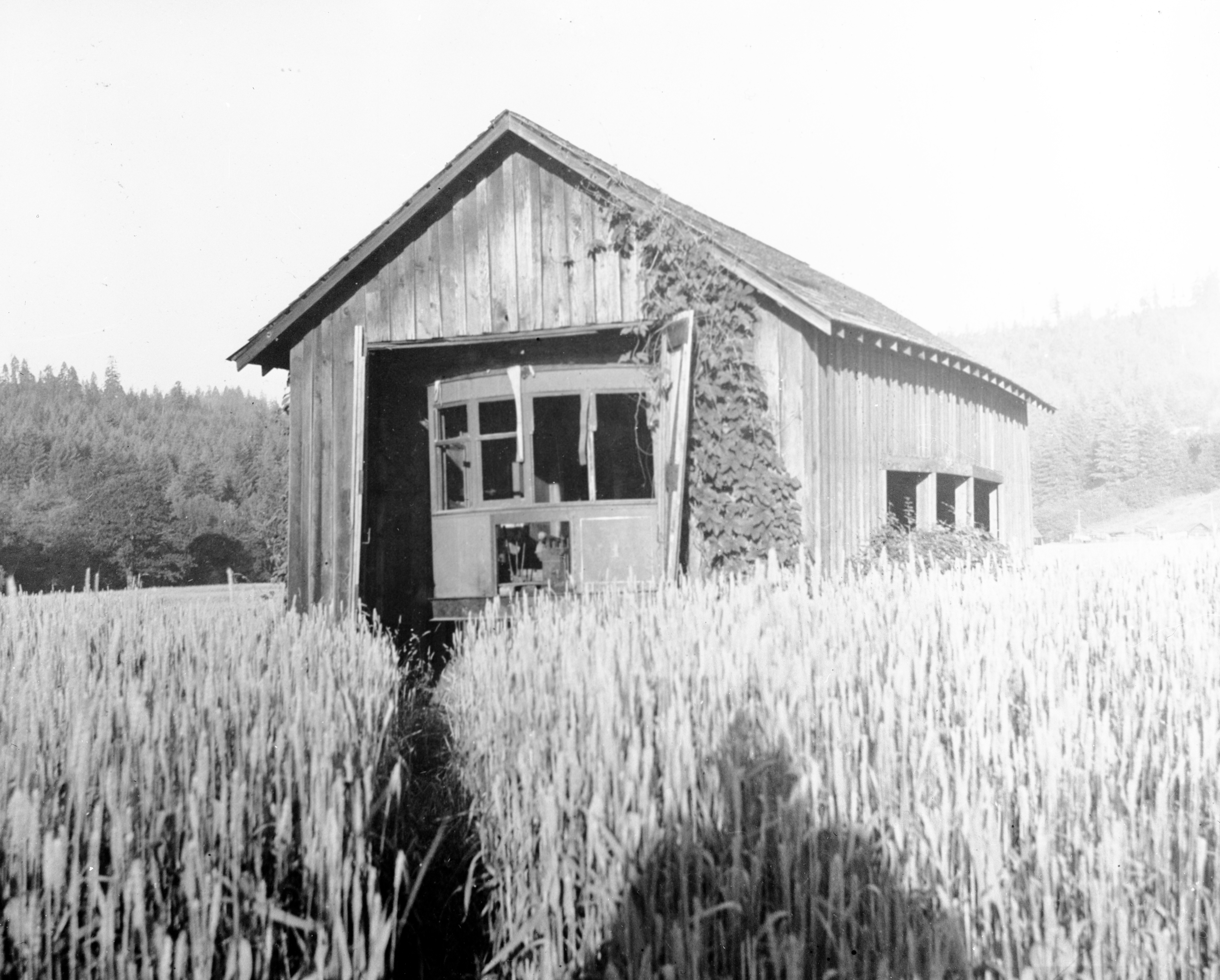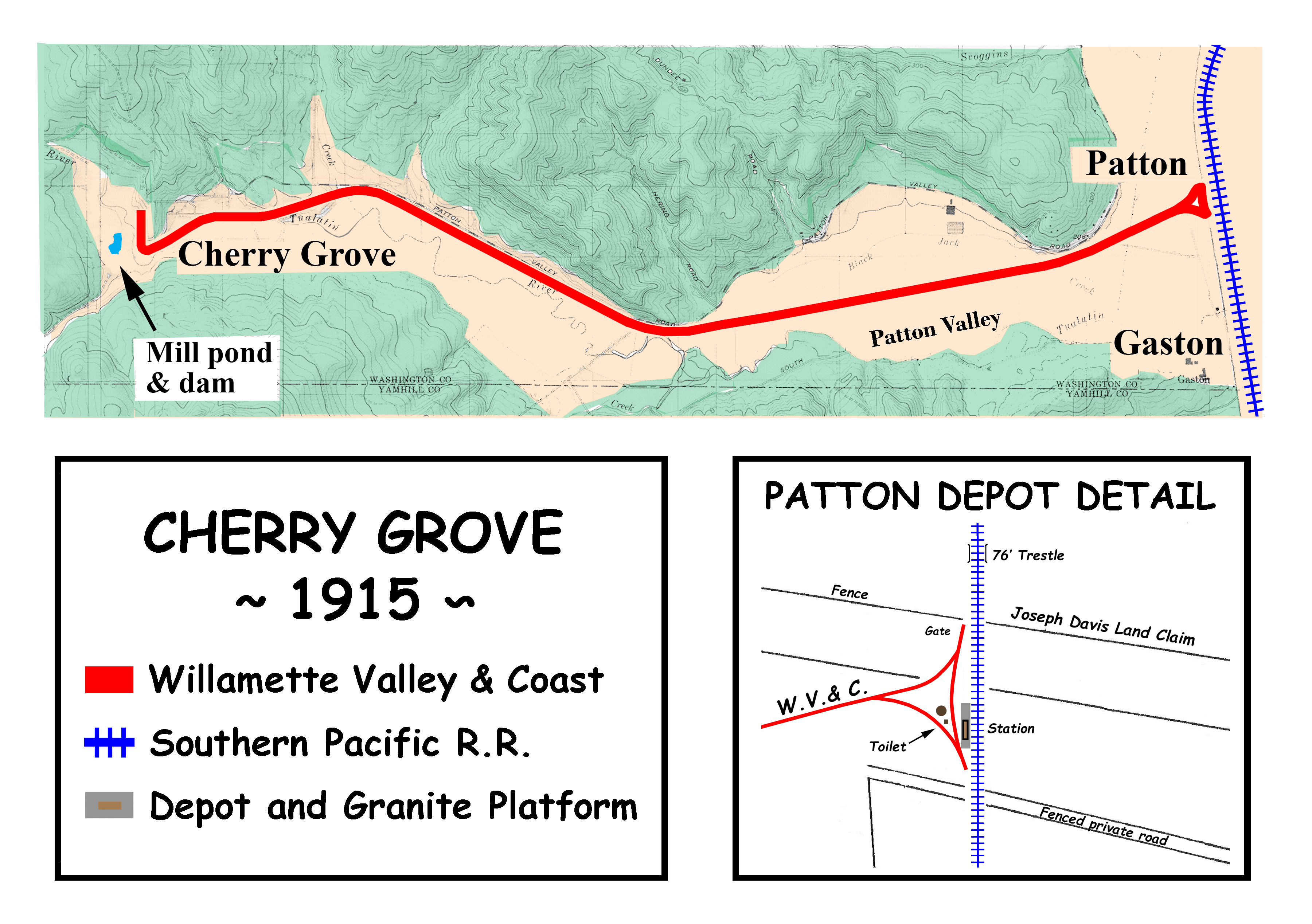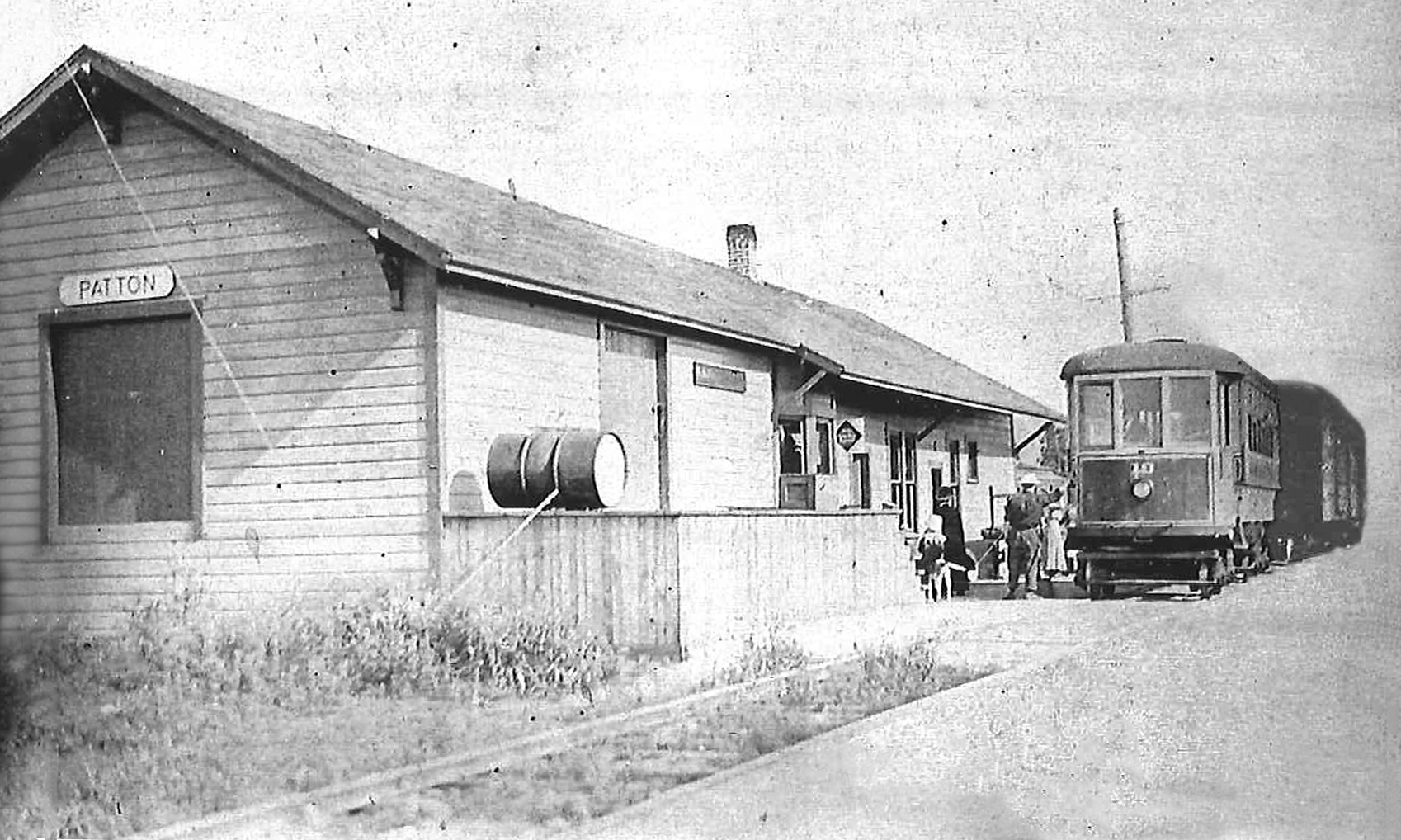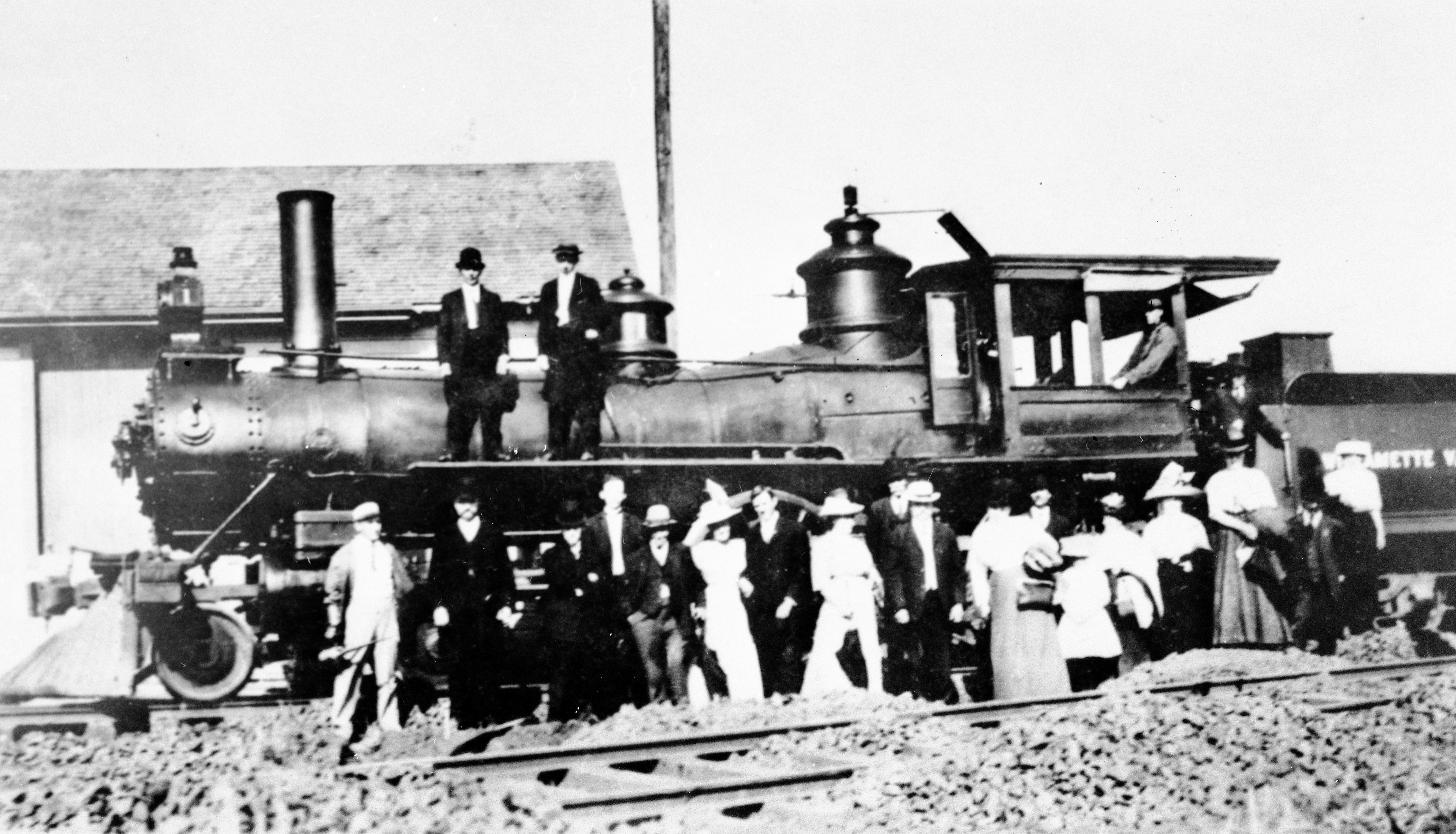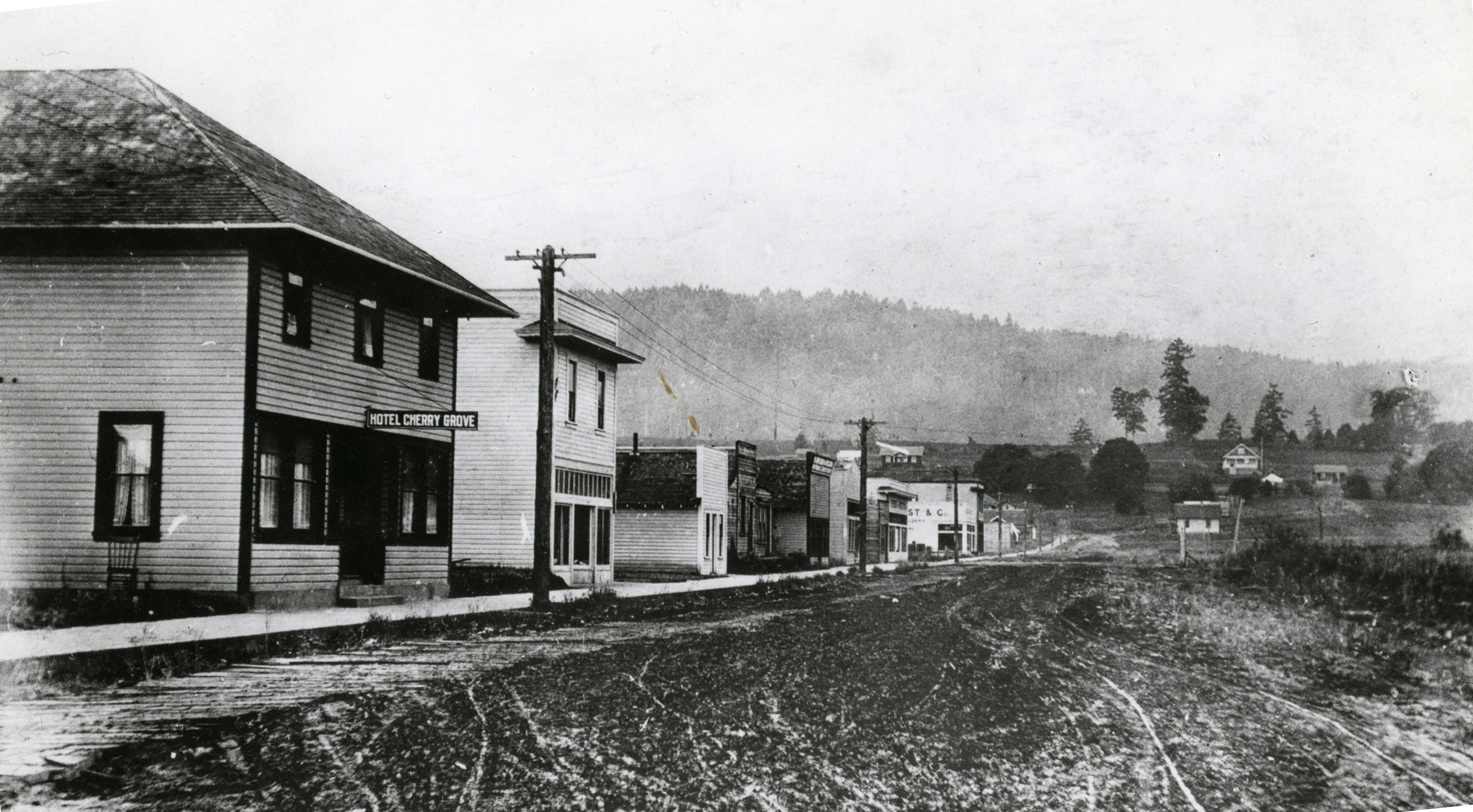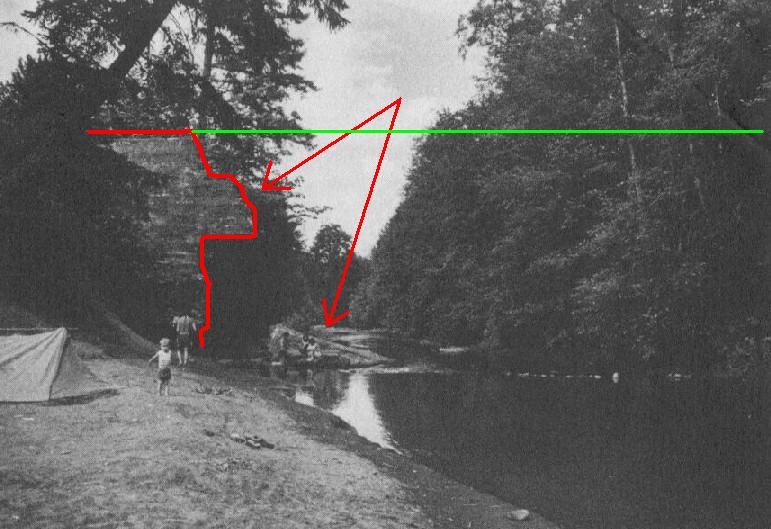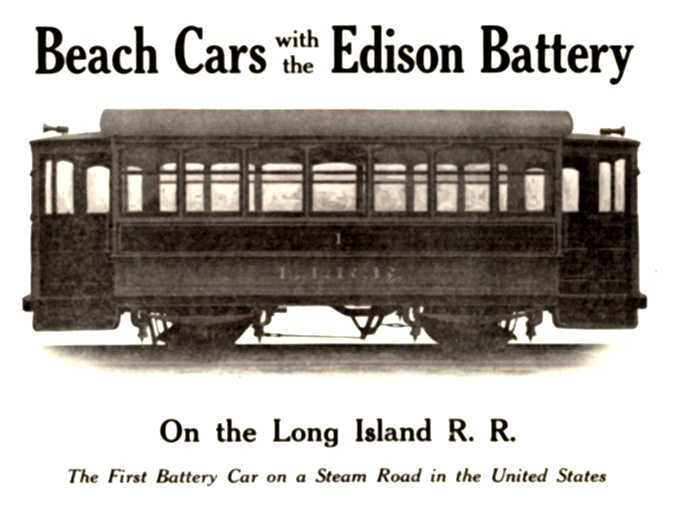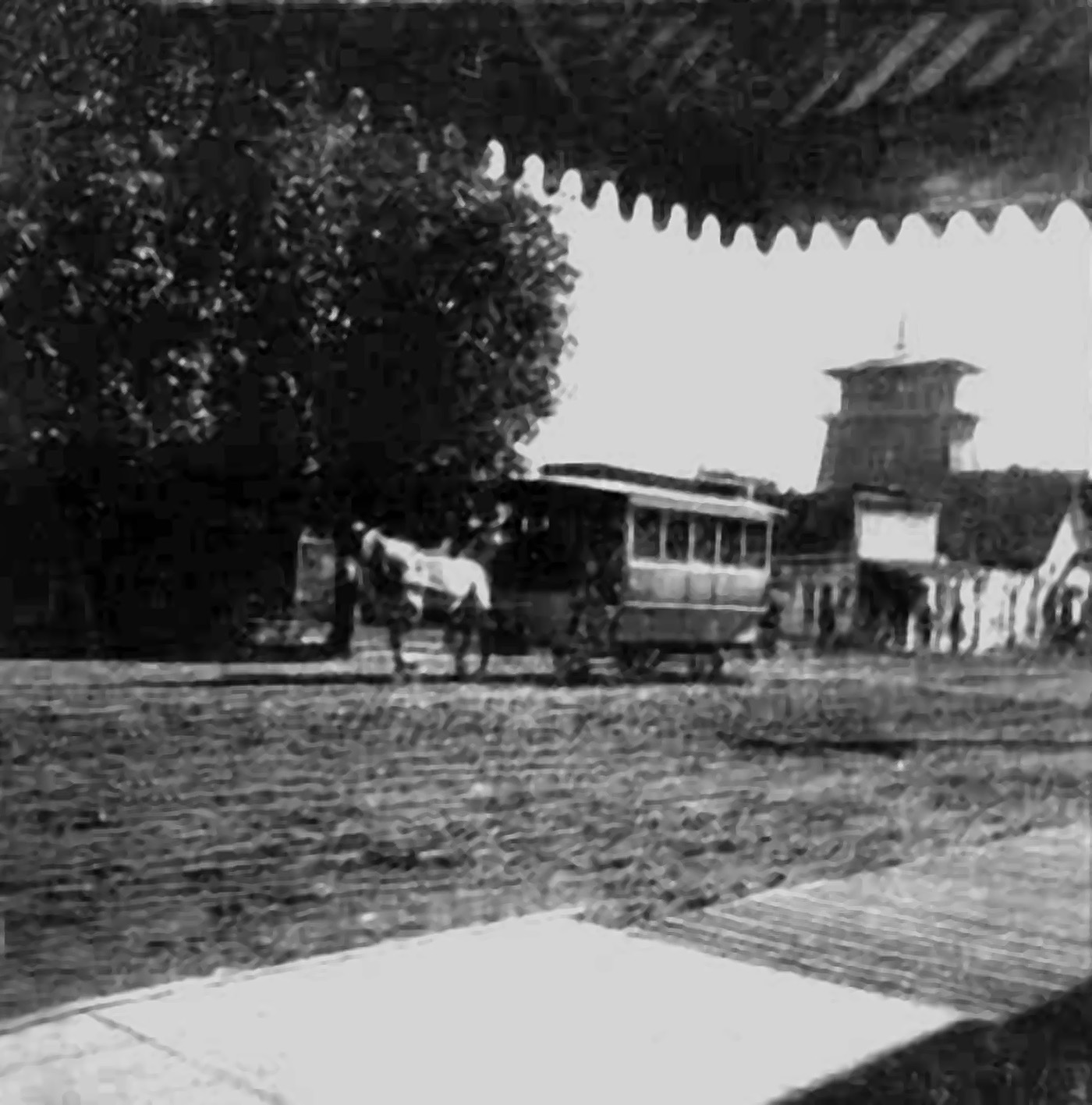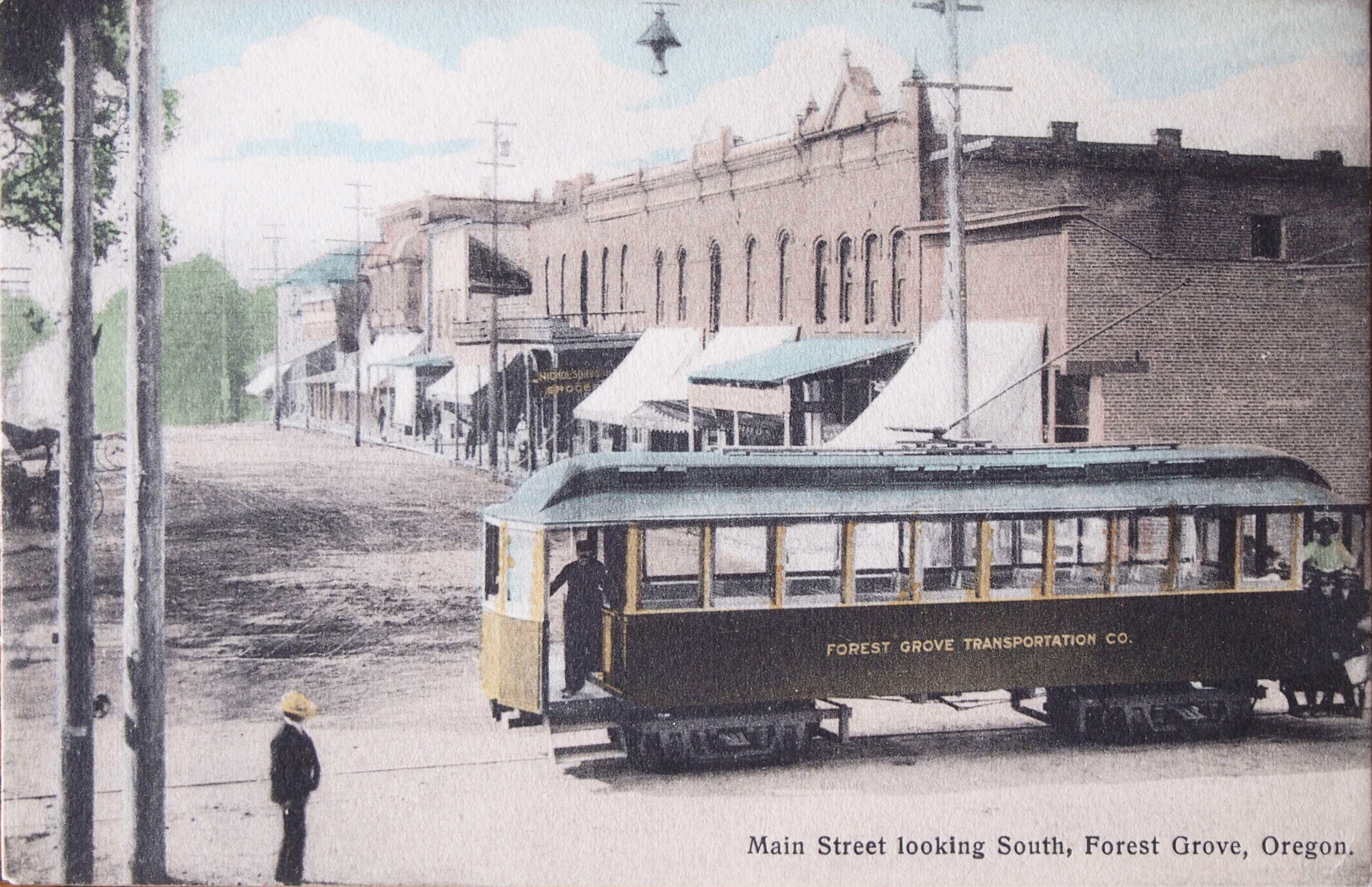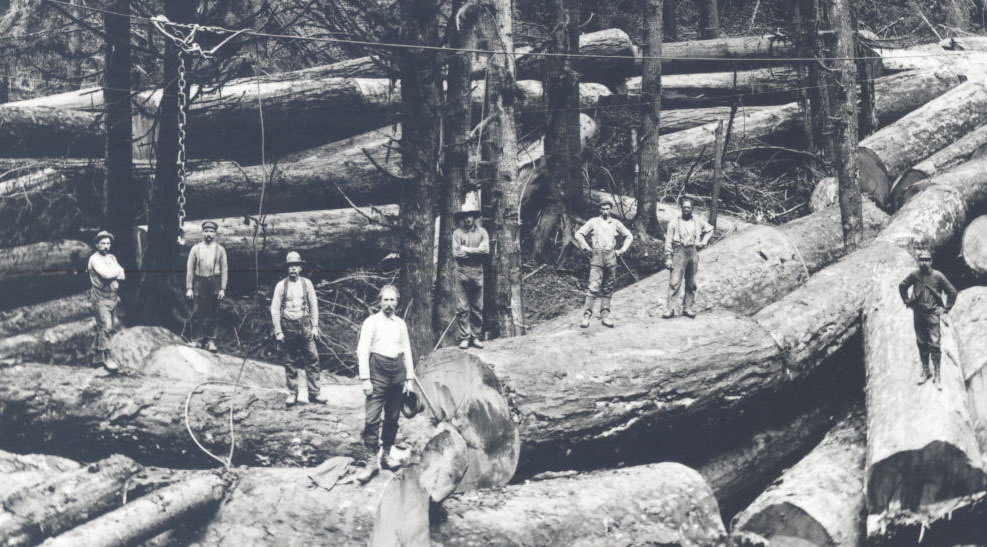In 1911, the purchase of the first battery-powered streetcar in the West catapulted the little Washington County town of Cherry Grove into the vanguard of cities using a new technology. The innovative streetcar operation was part of a short-line steam railroad whose primary purpose was to haul wood products from a new lumber mill.
The mill and its railroad were the brainchild of August Lovegren, a Swedish immigrant who arrived in the Patton Valley, eleven miles south of Forest Grove, in 1910. On January 17, 1911, Lovegren and his sons Phillip and Levi incorporated the Willamette Valley and Coast Railroad to serve the Lovegren Lumber Company. The railroad would become a common carrier, transporting passengers, as well as lumber, agricultural products, and mail over a 5.8-mile line between Cherry Grove and Patton Junction, where it connected with the Southern Pacific Railroad.
Although never realized, the railroad’s name reflected plans to extend tracks through the Coast Range to the Pacific. It was the second railroad to be so named: Colonel Thomas Egenton Hogg had organized a railway of the same name in 1874, when he began building a line from Yaquina City to Corvallis. The new WV&C was completed in September 1911. Regular service commenced on June 30, 1912, using a former Northern Pacific Railroad 4-4-0 steam engine. Until management began exploring more efficient motive power, passengers rode in a combination passenger and freight coach.
In the summer of 1912, the Lovegrens replaced a Mitchell automobile fitted with flanged metal wheels with a battery-powered streetcar. The new streetcar was expensive, but it allowed the company to establish trolley service without installing overhead wires and poles. Each evening, WV&C No. 10 returned to the locomotive shed for recharging. Wireless trolleys were used in several cities throughout the 1920s. Similar technology is now being applied to streetcars, as recent improvements in battery technology have prompted renewed interest in this type of vehicle.
Oregon’s only battery-powered streetcar was manufactured by the Federal Storage Battery Car Company of Silver Lake, New Jersey, whose vehicles were designed by Ralph H. Beach and powered by Thomas A. Edison’s newly perfected rechargeable batteries, the predecessor to today’s alkaline batteries. No. 10 was a 28-foot-long, eight-wheeled, Edison-Beach car. It weighed nine tons due to the 190 batteries that powered its two five-horsepower motors. Forty-five riders could be accommodated at speeds up to 35 miles per hour.
The Lovegren Lumber Company grew to a thirty-acre complex, including a sawmill, a planing mill, and a sash and door factory, before falling victim to natural disaster. It closed after suffering damage in a 1914 dam washout. The next year, August Lovegren sold the company to the Haskell-Carpenter Lumber Company, which reopened the sawmill and railroad. The mill closed in 1957.
The light electric streetcar, nicknamed The Galloping Goose because of the way it swayed on the tracks, served Cherry Grove with twice-daily trips until the late 1920s, when it was replaced by an acrid-smelling gasoline railcar called The Skunk. Both passenger and freight traffic ceased two years before the Willamette Valley and Coast Railroad applied for abandonment on July 27, 1935.
-
![]()
Cherry Grove depot.
Courtesy Vannatta Brothers Logging
-
![The gasoline-powered doodlebug nicknamed "The Skunk" languished in a barn in a wheat field after the railroad was abandoned in 1935.]()
Willamette Valley & Coast RR’s last streetcar, “The Skunk.”.
The gasoline-powered doodlebug nicknamed "The Skunk" languished in a barn in a wheat field after the railroad was abandoned in 1935. Courtesy Pacific NW Chapter, National Railway Historical Society, John Labbe Collection, LL-0761
-
![]()
1915 rail map of Cherry Grove and Patton.
Courtesy Richard Thompson, Lost Oregon Streetcars, Charleston SC: History Press, 2017.
-
![]()
Willamette Valley & Coast Railroad battery-powered streetcar at Patton, 1910s..
Courtesy Kathryn Notson, Jane Lyle Collection.
-
![]()
The Willamette Valley and Coast Railroad.
Courtesy Pacific NW Chapter, National Railway Historical Society, John Labbe Collection, L-0885
-
![]()
Cherry Grove, c.1913.
Courtesy Oregon Hist. Soc. Research Lib., 39932, photo file 1097
-
![]()
Cherry Grove with mill.
Courtesy Brigetta Nixon. Cherry Grove a History from 1852 to Present, 1976.
-
![The flood damaged the Lovegren Mill and power plant the mill closed for a time.]()
The remains of the 35 foot high dam destroyed in a flood on the Tualatin River on January 4, 1914..
The flood damaged the Lovegren Mill and power plant the mill closed for a time. Courtesy Brian McCamish, Active and Abandoned Railroads of the Northwest
-
![In 1911, August Lovegren placed an order for the only storage battery streetcar in Oregon.]()
Edison Battery Beach Car Ad.
In 1911, August Lovegren placed an order for the only storage battery streetcar in Oregon. Courtesy Railway Age Gazette, Nov 22 1912 p 13
-
![Founder of Cherry Grove]()
August Lovegren.
Founder of Cherry Grove Courtesy Swedish Roots in Oregon
Related Entries
-
![Corvallis streetcar system]()
Corvallis streetcar system
On December 17, 1889, a group of real estate developers, led by Zephen …
-
![Forest Grove streetcar system]()
Forest Grove streetcar system
In 1906, E. W. Haines, an Oregon state senator and banker, led the Fore…
-
![Portland streetcar system]()
Portland streetcar system
The majority of Portland’s oldest neighborhoods owe their location and …
-
![Timber Industry]()
Timber Industry
Since the 1880s, long before the mythical Paul Bunyan roamed the Northw…
-
![West Linn streetcar system]()
West Linn streetcar system
The Willamette Falls Railway was built by the Portland General Electric…
Related Historical Records
Map This on the Oregon History WayFinder
The Oregon History Wayfinder is an interactive map that identifies significant places, people, and events in Oregon history.
Further Reading
Nixon, Brigetta. Cherry Grove: A History from 1852 to the Present: American Revolution Bicentennial Commission of Oregon, 1971.
Thompson, Richard. Lost Oregon Streetcars: Charleston, S.C.: The History Press, 2017
Timberman 12.10 (August 1, 1911): 21.
Railway Age Gazette, November 22, 1912, p. 13.


